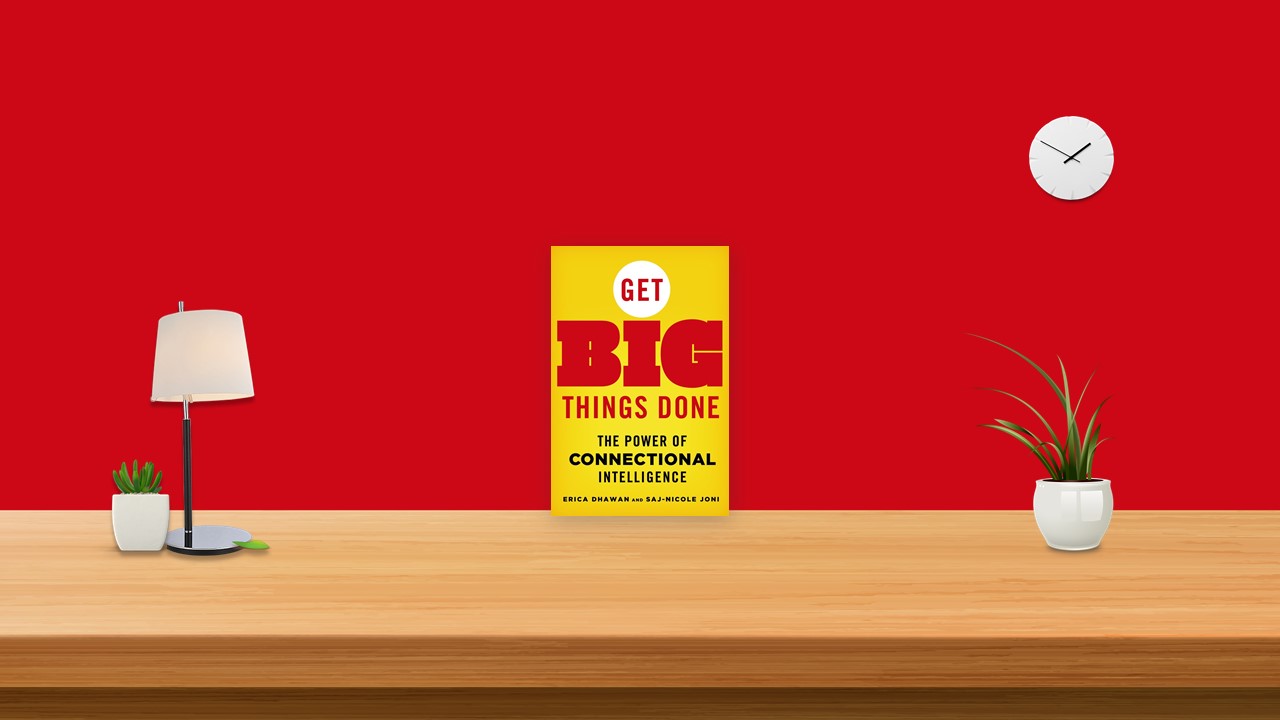The word connection gets thrown around a lot today. Faced with an abundance of tools for connecting, we are often left overwhelmed, without a clear sense of how to use the myriad forms of connection in the service of human potential. To some people, “connection” simply means being constantly online: social media, technology, apps, entertainment, digital sharing and all the forms of instant communication that are becoming a pervasive part of the fabric of how we live.
Connectional intelligence is the ability to combine the world’s diversity of people, networks, disciplines and resources, forging connections that create value, meaning and breakthrough results.
For those of you who think connectional intelligence sounds good, but feel that you don’t need to be more connected than you already are, know that we’re talking about something much broader and more profound than a new-and-cool set of digital tools. And for those of you who think that hyper-connectivity is just about teenagers on Twitter and twenty-somethings on Instagram, know that inclusive connection is the foundation on which the next wave of human potential will rise.
This book isn’t about the “25 Most Connectionally Intelligent People” in the world. It’s not a who’s who or a greatest hits list. It’s about what anyone and everyone can accomplish when they connect intelligently.
Never before have so many people had access, through mobile, social and digital technology, to so much collective brain power.
If you could multiply what you know in your head and your heart by the power of everyone you could contact, what would you do?
Connectional intelligence comes alive when you connect to individuals who share your vision who say, “We’re ready. We’re all in.”
Connect Intelligently
Several years ago, Colgate-Palmolive had a seemingly unsolvable problem. They had come up with a great new formulation for toothpaste with more fluoride, which in turn meant greater efficacy. They were eager to get the new product to market—from a competitive standpoint, timing mattered. But fluoride is a rather large molecule, and they were having trouble actually packaging the new toothpaste. Because of the chemical flows involved, Colgate’s manufacturing plants could not get the new toothpaste into the tubes with the extra fluoride intact. So Colgate put a top R&D team of scientists on the problem. But even that team couldn’t fix it right away. “Give us more resources and time, we’ll crack the code,” they insisted. But they struggled with the basic science needed to meet the challenge
Faced with a persistent problem that struck at the heart of the company’s core business, a top Colgate executive had the courage to ask different questions: What if there is a faster way to solve this? What if there is someone outside Colgate who already knows the answer? What if they would be willing to share the answer with us? How could we find them? What if we asked a crowd of solvers? He convinced his team to partner with an open-source problem-solving site called InnoCentive, on which businesses can present science challenges for which they would welcome outside solutions.
Colgate posted its fluoride problem on InnoCentive. Because it was the first time it had presented a challenge for public consumption, its executives had no idea what to expect. As it turned out, they did not have to wait long until one of the freelancers on InnoCentive offered a viable solution.
Ed Melcarek is resourceful and inventive, but after a layoff in mid-career he had a problem he couldn’t solve—getting a job. A design engineer and physicist, he’d designed heating vents for buildings and robot arms for spray-painting. But prospective employers weren’t impressed by his work history. His skills were “too diverse,” they said. He wasn’t “a good fit” anywhere he looked.
As a physicist, Ed Melcarek only had to read the Colgate challenge to realize he had the answer. Really, it was beyond simple: Colgate-Palmolive was approaching the problem from the wrong science—this wasn’t a chemistry problem, it was a physics problem. If you put a positive charge on the fluoride paste and grounded the tube, the positively charged particles would flow smoothly into the negatively charged tube, because in physics, opposites attract.
When Ed shot off his solution, light bulbs went on at Colgate-Palmolive. They hired him to do a few hours’ work, and then sent him a check for $25,000—a good payday for the engineer, a bargain for the company.
Over the years, Ed has won many awards—and plenty of prize money. He’s no longer looking for a permanent position. He isn’t even looking for consulting gigs: “InnoCentive does all that work with their seeker companies and lets me just do the science.” Best of all, he gets to choose which challenges he wants to work on. “I have,” Ed says now, “a dream job.”
When attracting—and retaining—twenty-something talent is of such a high priority, the lessons of connectional intelligence can help managers lead and mentor young people. Companies that embrace connectional intelligence will attract the best and brightest of the next generation
Colgate’s experience was transformational. Now Colgate often uses InnoCentive and other open-source problem-solving platforms to share its difficult challenges. It is also rethinking how it connects with its internal scientists, allowing them to opt-in to solve problems (versus working only on what’s been assigned to them) and connect across traditional boundaries
Colgate remains the #1 toothpaste brand worldwide, despite a furious challenge from Crest. Colgate’s willingness to go outside its lab and spend $25,000 to look for a solution to a difficult problem? Possibly the best investment the company made that year.
What makes the Colgate story exciting and relevant in our current economic landscape is that it isn’t just a story about how big-brain freelancers can solve tough science problems. Colgate’s use of InnoCentive made it a bellwether, and its story shows how we can all be agents of change to help each other supersize our dreams.
The Really Good News
We all know we are living in challenging times. Organizations, networks and communities are more interconnected than ever before. In our fast-changing world, the people and organizations who harness the power of connectional intelligence will be in a position to lead. The rest—those who stay disconnected, move slowly or not at all—may struggle, or even suffer. If you learn to activate the connectional intelligence within yourself and those around you, you can become unstoppable.
The message that we as authors wish to convey is: We all can do this. With our passion and our caring, we can learn, connect and create. And when our ideas combust, we can change lives we could not have imagined reaching. Not because we set out to do so, but because we expressed our connectional intelligence. We believe that when we join together we can solve our hardest problems and anything is possible.
5C’s of Connectional Intelligence
The research conducted by authors identified five attributes that occur again and again in the stories of connectionally intelligent people. To bring out our collaboration quotient and get big things done, you should first understand the 5C’s of connectional intelligence.
Curiosity, or the ability to frame and ask questions from different contexts to gain new perspectives.
Combination, or the ability to take different ideas, resources or products and combine them to create new concepts, new ways of thinking and get surprising results.
Community, or the ability to bring people together to create, spark new ideas and develop care and understanding.
Courage, the ability to venture, persevere and withstand uncertainty, fear or even danger when connecting ideas or initiating difficult conversations, as well as the courage to keep these ideas and connections alive and amplify them where necessary.
Combustion, or the ability to mobilize and curate diverse networks to act in pursuit of a goal.
This five-step plan requires you to write things down, clearly stating your vision, identifying what you don’t know well and articulating what you believe.
- What’s the big thing you want to get done? This is your big goal, the dream you want to supersize using connectional intelligence for your work or life.
- Why does it matter?
- Why does it matter to you? Why might it matter to other constituencies (networks, people, groups) who are trying to get the same thing done? Why might it matter to people you aren’t connected to yet?
- Who are all the people and groups you can leverage to get this big thing done?
- Who does this big thing really matter to that you can leverage? Does it matter to your stakeholders? Does it matter to the people you are trying to serve? Does it matter to anyone else?
- How can you activate your connectional intelligence to get this big thing done?
- How can you involve everyone who can help? How can you work with key influencers, gatekeepers and authorities? What types of resources and ideas can you leverage? How can you use different tools and technologies to turn your ideas to action? How can you connect with new people and networks to tackle the big thing you want to get done? How can you go to improbable places and to unlikely people to find solutions?


